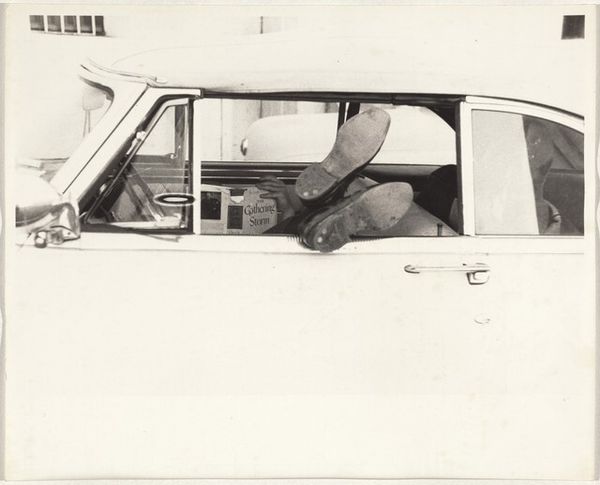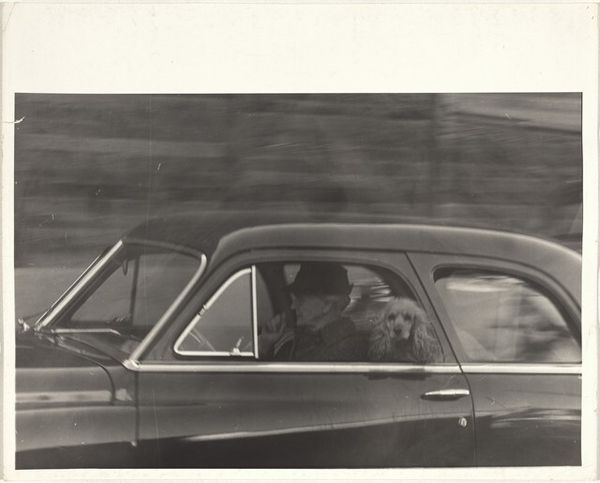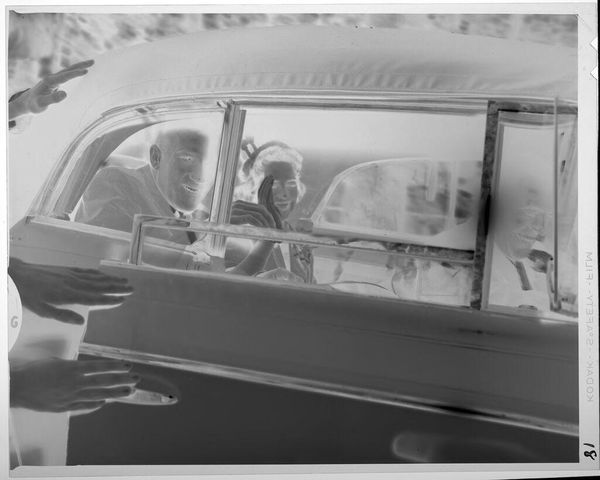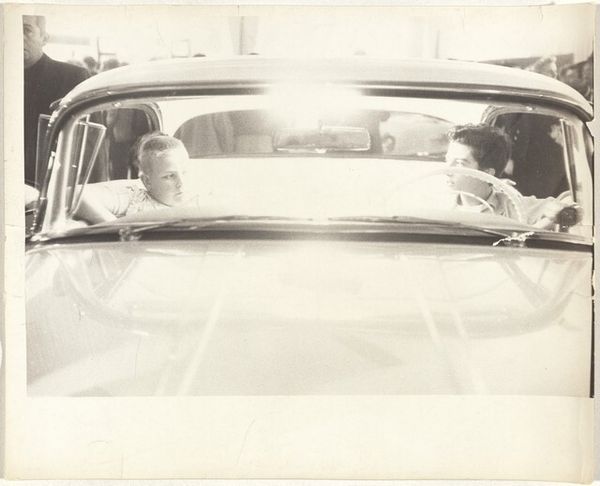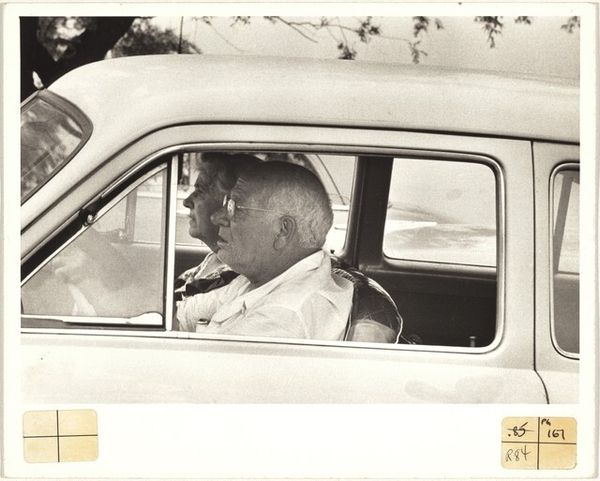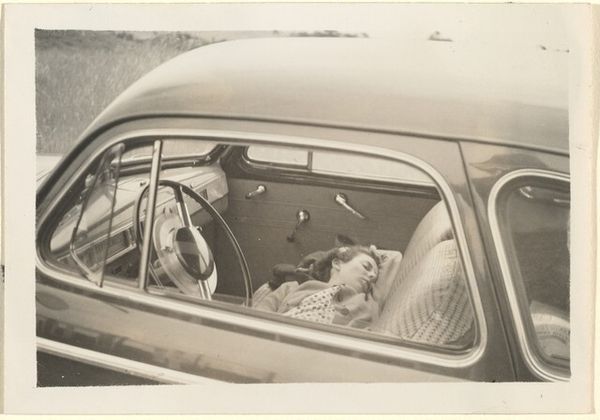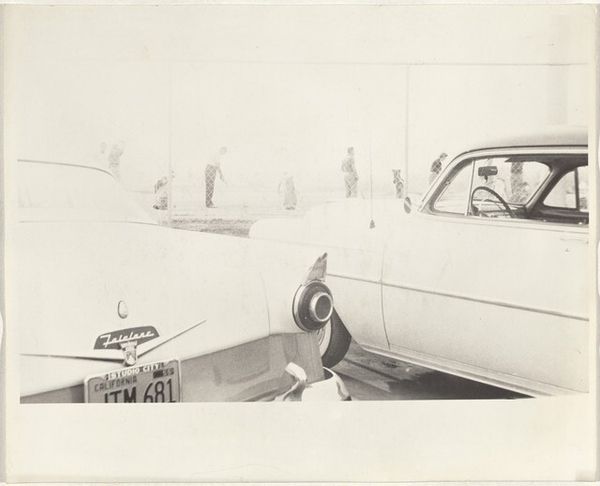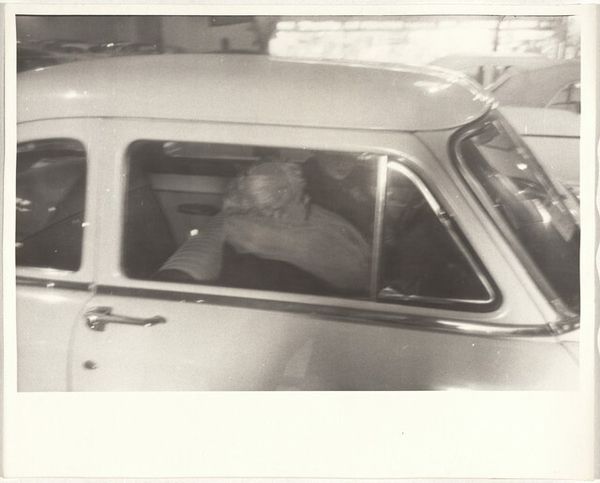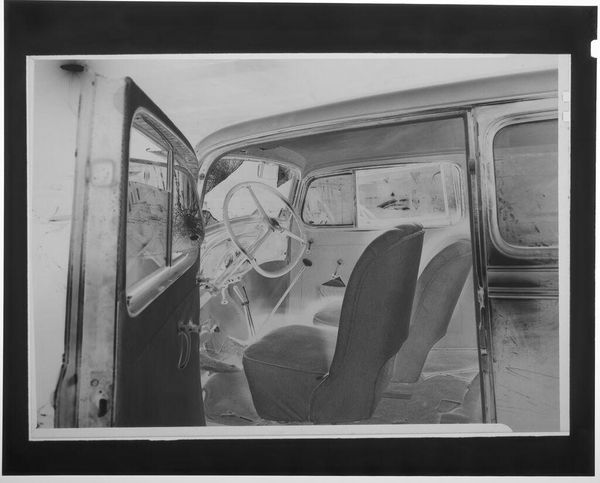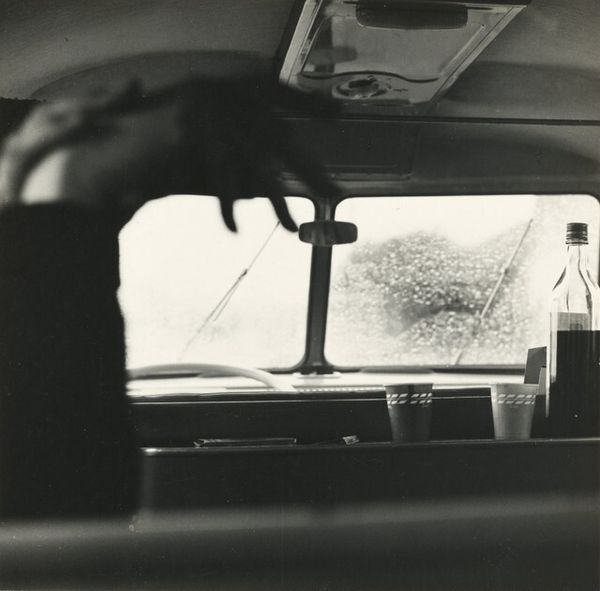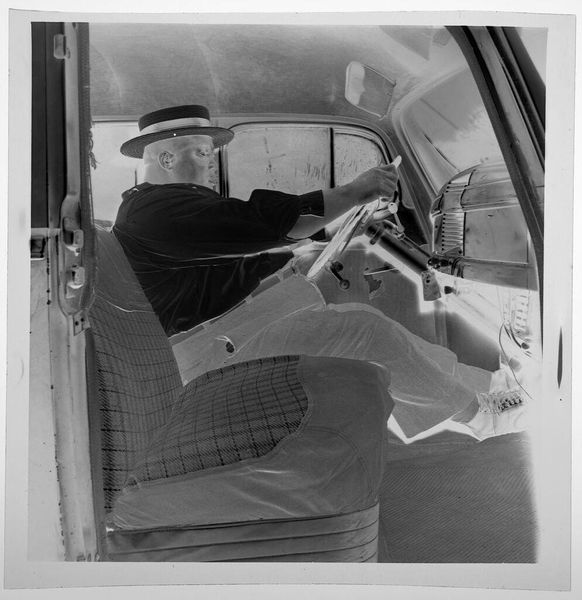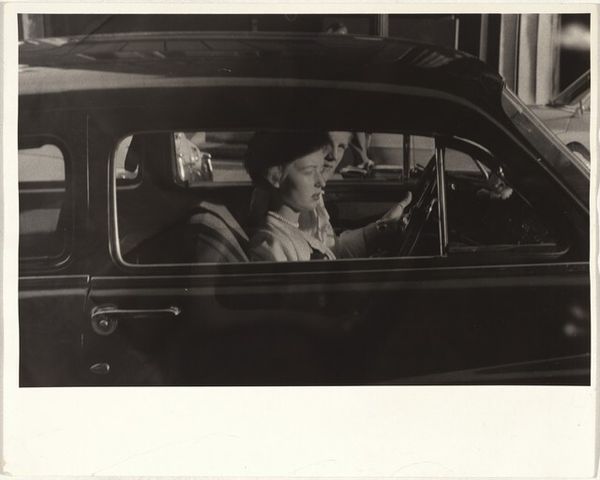
#
wedding photograph
#
photo restoration
# print
#
wedding photography
#
archive photography
#
historical photography
#
couple photography
#
wedding around the world
#
old-timey
#
monochrome photography
#
celebration photography
Dimensions: sheet: 20.2 x 25.2 cm (7 15/16 x 9 15/16 in.)
Copyright: National Gallery of Art: CC0 1.0
Curator: Robert Frank’s photograph, “Man reading in automobile—Los Angeles,” taken in 1956, presents an intimate and somewhat unconventional tableau. Editor: My immediate reaction is one of curiosity, perhaps mixed with amusement. The stark monochrome palette creates a sense of immediacy. And yet, the composition is decidedly odd – a man's feet resting against the car window is a very confrontational aesthetic choice. Curator: Absolutely. This image resonates with a subtle sense of rebellion against societal norms, against what's expected. The soles of the man's shoes prominently displayed suggest an indifference to conventional behavior. It speaks volumes, especially within the context of the 1950s American dream. Editor: True, the framing devices work overtime to push an unsavory intimacy onto the viewer: the newspaper tucked there reads "Gathering Storm." A bit on the nose. It is fascinating how the contrasting light and shadow emphasize the rough texture of his work boots in that limited frame. It highlights materiality but what’s the story? Curator: That is the real question isn't it? Frank captures more than a scene; he seems to bottle a state of mind. The man's posture, juxtaposed with the visible newspaper headline, hints at deeper societal anxieties percolating beneath the surface of postwar optimism. The car itself becomes a symbol—a refuge, a barrier, a microcosm of the individual versus society. Editor: And technically speaking, the slightly blurred background forces the viewer’s eye straight toward that interior theater, giving it a peculiar emphasis. In short, this shot distills information beautifully while crafting visual dissonance. Curator: For me, the enduring power of the image lies in its ambiguity. The symbols and layers are there, inviting constant interpretation and questioning of the status quo. What is this man seeking? And in that, Frank subtly directs the gaze of cultural expectation back on to itself. Editor: Ultimately, it’s the tension between what's shown and what’s hidden that grabs the viewer. What feels like an instant slice of life, proves—under a moment’s scrutiny—to deliver many, complex questions.
Comments
No comments
Be the first to comment and join the conversation on the ultimate creative platform.
